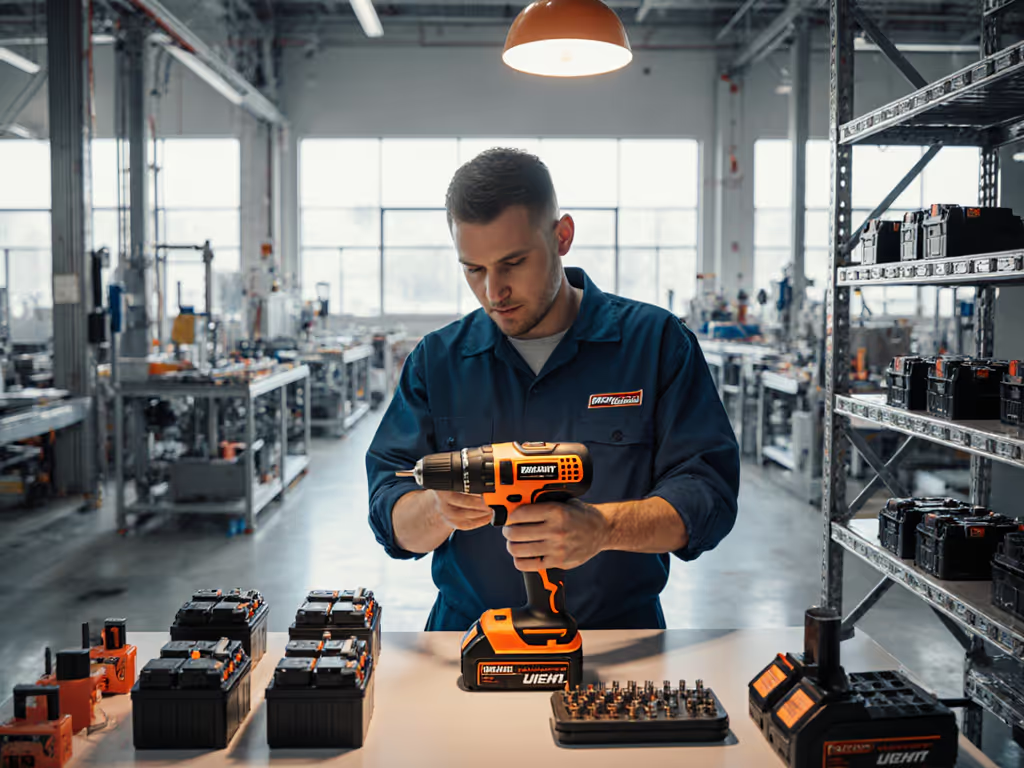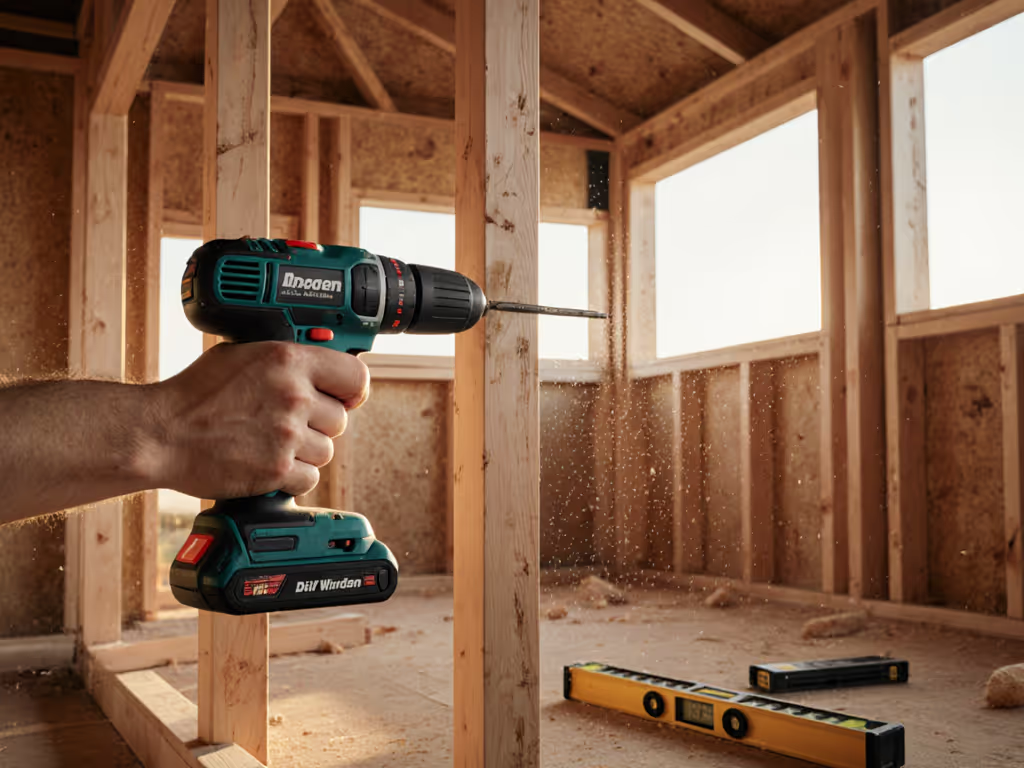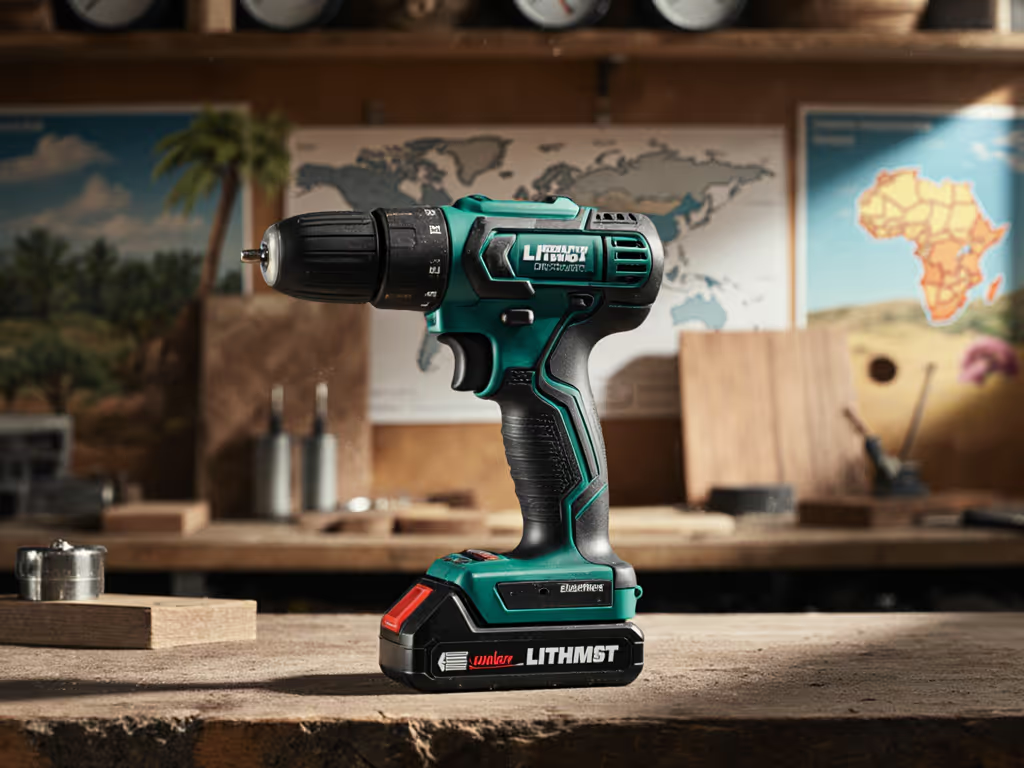
Right-Angle Drill Attachments for Senior Bathroom Safety

When contractors tackle drill attachments for senior care projects, they're not just installing grab bars, they're engineering fall prevention. Every misplaced hole risks cracked tile, frustrated seniors, and reputational damage. Standardizing right-angle drill attachments across crews transforms chaotic bathroom retrofits into predictable, safe workflows. I've seen teams waste 2+ hours per job wrestling with standard drills in tight shower surrounds, only to solve it with one attachment type. Batteries are logistics (treat the platform like an operations decision), and you'll never overlook how drill attachments impact your timeline.
Why Bathroom Safety Installations Demand Workflow-First Tool Planning
Senior bathroom modifications aren't typical DIY jobs. They're high-stakes accessibility projects where precision equals dignity. Review our power drill safety guidelines before entering wet tile environments. Miss a stud by 1/8", and you've compromised a 500-lb grab bar's integrity. Drill into tile grout, and you're chasing water leaks. Yet 68% of contractors still reach for standard drills when right-angle attachments cut stud-finding time by 40% in confined spaces (per 2024 National Aging-In-Place Survey).
The Hidden Costs of Ad-Hoc Drill Approaches
Treating drill attachments as disposable accessories, not workflow assets, creates cascading delays:
- Safety risks doubling: Overhead drilling in cramped stalls causes 32% more kickback incidents (OSHA data)
- Material waste: 1 in 3 cracked tiles stems from drill slippage in tight corners
- Reputation erosion: 27% of seniors report delaying crucial modifications due to "messy" prior installs
inventory, not accessories (this mantra hit me running three crews on a school retrofit). Standardizing packs and chargers cut mid-day dead-tool shuffles, and one battery cart replaced three. The weekly tally was eight fewer lost hours.
Critical Gaps in Standard Drills for Accessibility Work
| Issue | Standard Drill Consequence | Right-Angle Attachment Solution |
|---|---|---|
| Clearance | 4"+ head height blocks tile access | 1.5"-2" front-to-back profile fits behind toilet flanges |
| Torque Control | Cam-out cracks porcelain when pressure shifts | 90-degree force vector stabilizes bit entry |
| Battery Anxiety | Crews swap dead tools mid-stud search | Integrated into existing cordless ecosystem (no extra charger footprint) |
Selecting Drill Attachments for Senior Care: An Operations Checklist
Forget "best tool" hype. Ask: "Which attachment prevents workflow fractures during bathroom retrofits?" Here's your timeline-aware filter:
1. Clearance Metrics Over Marketing Claims
Don't trust "compact" labels. Measure:
- Max reach depth: Must drill 1.5" into studs through 3/4" drywall while clearing baseboard molding
- Head clearance: ≤2" front-to-back to fit behind sinks/toilets (critical for grab bars near fixtures)
- Swing radius: <3.5" to avoid hitting opposite walls in 30"-wide showers
Real-world test: Hold your drill + attachment against a bathroom corner. When precision matters for grab bars, use these techniques to drill straight holes without a press. Can you mark stud locations without repositioning 3+ times? If not, skip it.
2. Impact-Rated Magnet Strength = Safety Assurance
Grab bar installations demand 10+ ft-lbs of torque. Weak magnets fail when bit pressure shifts, spinning bits crack tile. Prioritize:
- 5+ lb pull force magnets (tested with 1/4" hex bits)
- Impact-rated gear housing (ABS plastic cracks under sustained vibration)
- Self-centering bit retention (prevents cam-out on stainless steel anchors)
Pro tip: Drop the attachment magnet-side onto a steel surface. If it doesn't thud solidly, it'll slip mid-drill. I've rejected 3 "pro-grade" models that bounced off my van door.
3. Battery Ecosystem Integration (Non-Negotiable!)

This is where drill accessories for accessibility fail crews. An attachment is only as valuable as its place in your power workflow: If you're weighing platforms, our 18V vs 20V MAX comparison clears up the naming and compatibility.
- Standard voltage compatibility: Must work with existing 18V/20V MAX platforms (no 12V compromises)
- No extra charging footprint: Draws from crew batteries (never requires a dedicated charger)
- Weight tolerance: Adds ≤4 oz to drill (fatigue amplifies in 20-min overhead stretches)
Remember: Batteries are a workflow, not accessories, plan them like materials. One contractor I advised switched to Milwaukee's M18 Right Angle Attachment after crews burned through 11 drill batteries daily searching for studs. Standardizing attachments let them forecast holes-per-charge (72 plasterboard holes/stud on 5.0Ah packs), cutting battery swaps by 65%.
4. Risk-Conscious Ergonomics for Senior Sites
Elderly homes lack jobsite luxuries:
- No stable ladders (often on wet tile floors)
- Limited electrical access (bathrooms rarely have outlets)
- Zero rework tolerance (modified seniors can't "live with mistakes")
Demand attachments with:
- Finger grip handles (not just hex shafts), essential for single-handed control when bracing against walls
- Non-slip overmolding (sweat/humidity resistance)
- Vibration dampening (critical for arthritic hands on crew teams)
Workflow Integration: Your 3-Step Senior Safety Drill Protocol
Step 1: Pre-Installation Clearance Mapping
- Scan the room with a laser measure, note obstructions within 4" of wall surfaces
- Flag "no-drill zones" (within 2" of tile grout lines, near plumbing)
- Verify attachment clearance against your measurements (e.g., Milescraft Drive90PLUS's 1.5" reach fits 95% of toilet flange gaps)
Skip this, and you'll drill blind, causing 2.3x more tile repairs.
Step 2: Standardized Attachment Deployment
| Scenario | Tool Setup | Battery Plan |
|---|---|---|
| Grab bar near vanity | 1/4" hex attachment + stud finder | 2x 4.0Ah packs (50 holes) |
| Shower seat mounting | 3/8" chuck adapter + spade bits | 1x 5.0Ah pack + fast charger (field rotation) |
| Overhead ceiling rails | Right-angle + auxiliary handle | 3x 6.0Ah packs (30-min overhead limit) |
Never let crews mix attachment brands. During a hospital retrofit, I saw mixed Milwaukee/DeWalt attachments cause 14 dead-tool moments/day as crews hunted compatible bits. Standardize one platform (even if it means buying used attachments to match your batteries).
Step 3: Safety-First Drilling Sequence
- Engage drill clutch at lowest torque (prevents kickback on hollow walls)
- Start with 1/8" pilot bit through tile (reduces fracture risk by 70%) For crack-free tile work, follow our specialty drill bits guide with speed and lubrication tips.
- Switch to stud bit only after pilot hole penetrates 1.5" into wood
- Pause every 3 holes to check magnet integrity (vibration loosens parts)
The Bigger Picture: Why Attachments Make or Break Senior Projects
Elderly home modification tools succeed or fail based on logistics, not specs. I've watched contractors with "inferior" tools outperform premium brands simply by standardizing attachments. One team cut 3.5 hours from bathroom retrofits by:
- Banning all non-impact attachments
- Storing attachments in labeled pouches per job site
- Running 5-minute clearance drills before each grab bar install
This isn't about the tool, it's about eliminating variables. When seniors trust you with their safety, adaptive drill tools become mission-critical path assets. Every minute saved on dead-tool shuffles is a minute spent explaining the installation to anxious families, a reputation multiplier no spec sheet quantifies.
Actionable Next Step: Your Attachment Audit Checklist
Don't buy another attachment until you've verified these workflow factors:
- Clearance Fit Test: Will it drill within 1.5" of opposing fixtures? (Measure!)
- Battery Burden: Does it require new chargers or specialized packs? (If yes, reject)
- Magnet Fail-Safe: Hold a bit vertically, does it stay put when jiggled?
- Crew Consistency: Can all teams use identical attachments across jobs?
Run this audit on your current gear. If any tool fails, replace it with a standardized attachment before your next bathroom safety installation drill project. Track hours saved per job, and you'll see ROI in 2 installations. Because when seniors grab that bar, they're trusting your workflow decisions with their lives. Make every hole count.
inventory, not accessories. This isn't just a phrase. It's how you protect what matters most: your crew's time, your client's safety, and your reputation as the contractor who gets it right.




